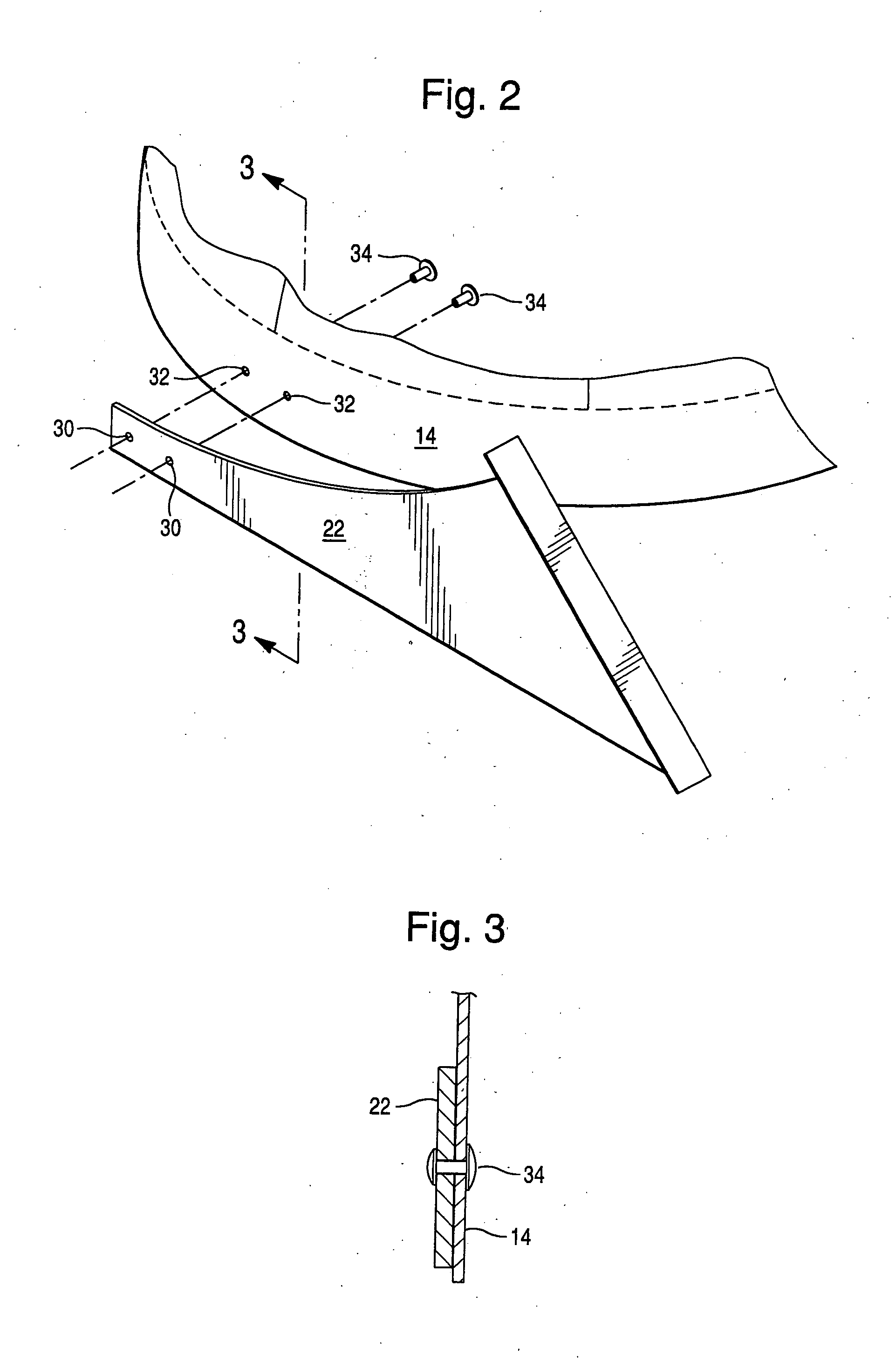Headgear having airflow characteristics
a technology of airflow and headgear, which is applied in the field of headgear, can solve the problems of current hats or caps, their tendency to be blown off, and not working,
- Summary
- Abstract
- Description
- Claims
- Application Information
AI Technical Summary
Benefits of technology
Problems solved by technology
Method used
Image
Examples
Embodiment Construction
[0036] Referring first to FIG. 1 the invention is indicated generally at 10. The main body of the cap 12 is a dome-shaped cap of the type sometimes referred to as a “beanie”. It should be understood at the outset, however, that the shape of this main body portion of the cap does not form part of the inventive structure of the instant invention and that the invention is not limited to this type and many other shapes for head covering would occur to the skilled practitioner. Included near the base of the cap body 12 is a semi-rigid headband, shown in FIG. 1 in dotted outline and indicated at 14. This headband 14, which could be made out of any number of suitable materials such as plastic or paper, encircles the base 16 of the main cap body 12.
[0037] The discussion, still referring to FIG. 1 now turns to the visor portion of the headgear 10. This visor portion is indicated generally at 18 and includes the main visor portion 20, first arm 22, and second arm 24. Main visor portion 20 is...
PUM
 Login to View More
Login to View More Abstract
Description
Claims
Application Information
 Login to View More
Login to View More - R&D Engineer
- R&D Manager
- IP Professional
- Industry Leading Data Capabilities
- Powerful AI technology
- Patent DNA Extraction
Browse by: Latest US Patents, China's latest patents, Technical Efficacy Thesaurus, Application Domain, Technology Topic, Popular Technical Reports.
© 2024 PatSnap. All rights reserved.Legal|Privacy policy|Modern Slavery Act Transparency Statement|Sitemap|About US| Contact US: help@patsnap.com










